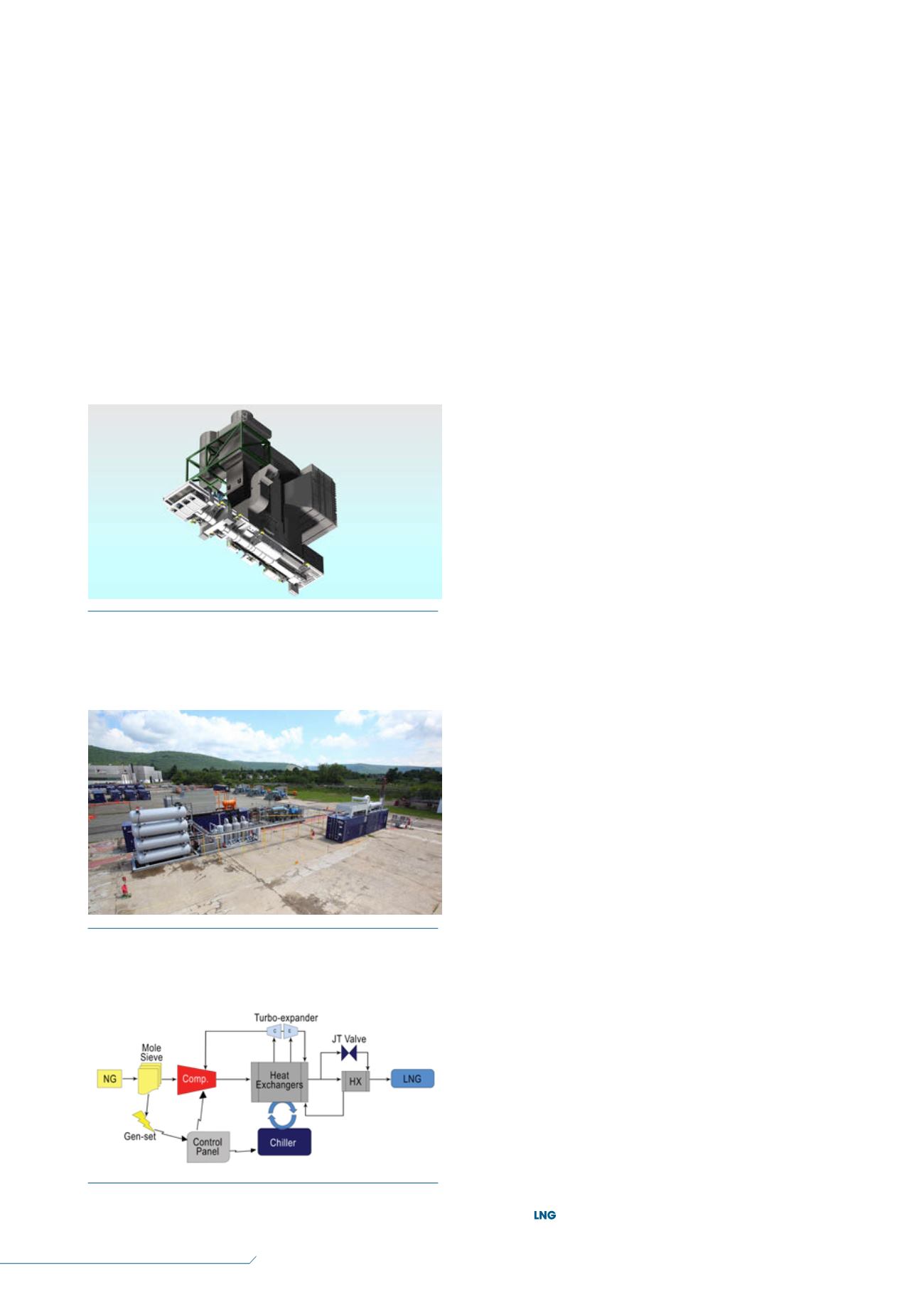
22
LNG
INDUSTRY
JULY
2016
The higher fuel gas consumption resulted inmuch higher
emissions, which increased the annual CO
2
and NO
X
emission tax
costs. In addition, the industrial frame gas turbine availability was
lower than that of the aeroderivative engines, mainly due to
extensive downtime duringmajor overhauls (50 000 hr between
overhauls). As a result, the industrial frame gas turbines were
removed from the list of potential driver alternatives because of
their much higher overall lifecycle costs.
Electric motors were also considered in the driver selection
study, but were found to require a large amount of electrical
power (almost 800MW). This option would have also required an
extensive electrical systemwithmultiple, large variable frequency
drivers (VFD) and the associated harmonic filters. As such, further
consideration was not given to electric motors for the liquefaction
compressor drivers because of the high CAPEX associated with
this solution.
The final stage of the driver selection study focused on
comparing larger aeroderivative gas turbines (Industrial Trent 60)
to smaller aeroderivative gas turbines, as outlined below:
4 x Industrial Trent 60 gas turbines + GT IAC.
5 x smaller aeroderivative gas turbines.
CAPEX costs were similar for the two aeroderivative engine
configurations, but when the total installed cost was considered,
there was a small benefit resulting from the option with the least
amount of equipment.
OPEX, however, was the key differentiator when comparing
the two options. With fewer engines installed in the 4 x option,
cost savings were realised in NO
X
and CO
2
emission taxes, as well
as fuel consumption andmaintenance costs.
In summary, the 4 x Industrial Trent 60 DLE (dry low emission)
configuration scored favourably in critical evaluation categories
and was selected as the preferred driver for the Lake Charles
liquefaction plant’s main liquefaction compression service.
Meeting the needs for small
scale distributed LNG
Small scale LNG projects can operate as small fleets of
redeployable liquefaction units. These smaller capacity plants
require lower total CAPEX and allow end users to deploy a
more adaptable LNG programme designed to adjust quickly to
fluctuations inmarket demand and gas availability.
Combining a small scale LNG systemwith a transportable
LNG storage and dispensing solution offers a portable (or
redeployable) liquefaction asset that can be located close to
natural gas supply and/or fuelling demand, depending on logistics
and economics.
Elizabethtown Gas, a subsidiary of AGL Resources based in
Elizabeth, New Jersey, US, delivers natural gas to approximately
281 000 customers and recently ordered two LN
Go
™ natural gas
liquefaction systems from the Dresser-Rand business.
Sized to produce approximately 13 500 gal./d of LNG, this
system is a modularised, portable, natural gas liquefaction plant
designed to provide on-site natural gas liquefaction. This
point-of-use production plant is a standardised product made up
of four packaged skids: a power module, compressor module,
process module, and a conditioning module.
LN
Go
natural gas conversion plants enable the distributed
production of LNG on a small scale. The technology eliminates
the need for the costly trucking of LNG over long distances from
large, centralised plants to LNG fuelling depots, as is the practice
today.
The peak shaving application will enable Elizabethtown Gas
to liquefy natural gas on-site, which can then be stored for future
use. By doing so, the company expects to avoid higher prices for
the spot purchases of LNG to meet peak demand requirements.
Conclusion
Meeting the needs of any LNG project, whether large in scope,
mid scale in size, or developed for peak shavings, can be done
in a way that enhances efficiency and environmental footprint,
while at the same time lowering total lifecycle costs. Turning
to a supplier with an extensive portfolio of both compressors
and drivers and other turbomachinery equipment can play a
major role in helping to meet the ‘power-to-compression’ needs
of any project, large or small, while at the same time meeting
the individual requirements and key objectives of the project
operator.
Figure 7.
The LN
Go
TM
natural gas liquefaction system is a
modularised, portable, natural gas liquefaction plant designed to
provide on-site natural gas liquefaction (source: Dresser-Rand).
Figure 6.
A torque tube base plate offers a torsional stiffness
that is superior to a box beam and provides easier access to the
fuel gas system, hydraulic starter, synthetic oil system, and other
controls (source: Dresser-Rand).
Figure 8.
A diagram of the LN
Go
liquefied petroleum system
(source: Dresser-Rand).


